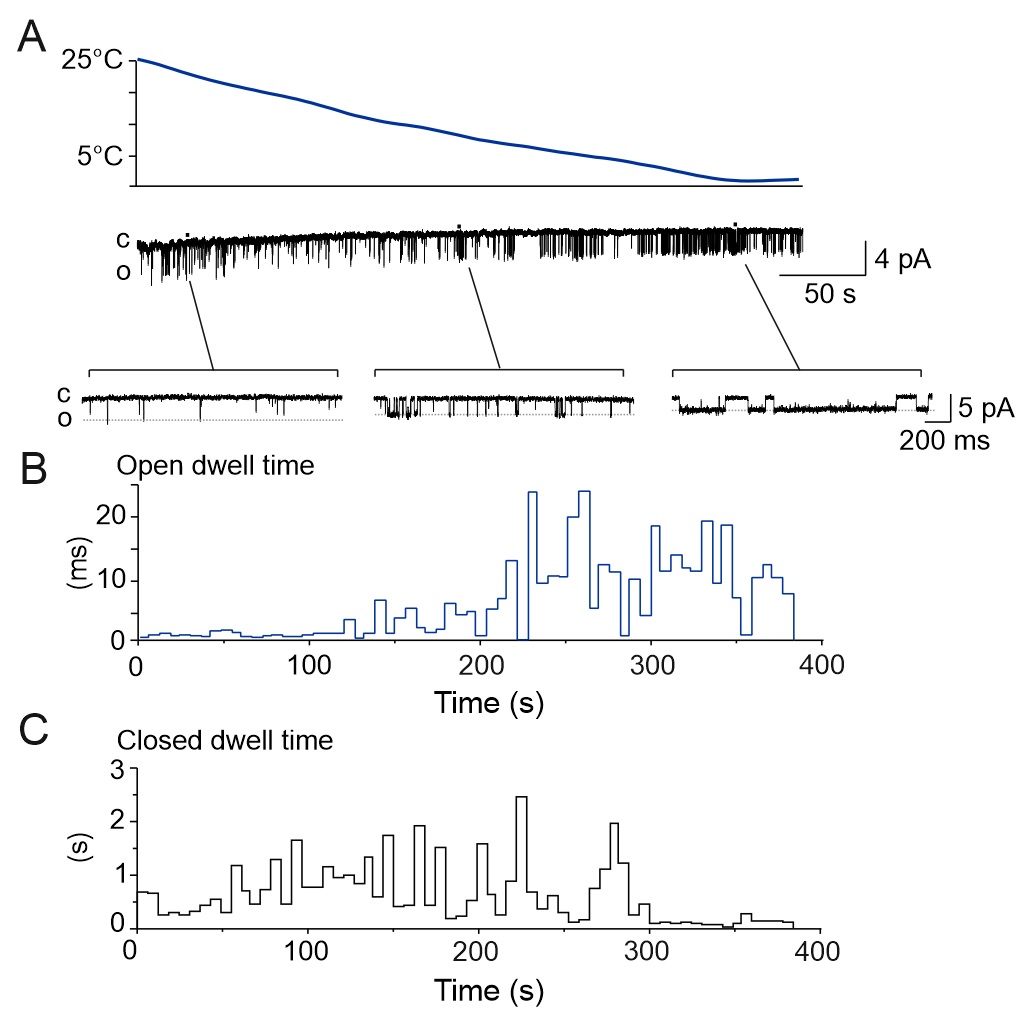Mechanisms of thermosensation in ThermoTRP channels
Thermosensation is conferred by a group of ion channels from the TRPV (vanilloid), TRPM (melastatin), TRPC (canonical) and TRPA (ankyrin) families that are mainly found in neurons of nociceptive pathways. These channels gated by specific temperatures are known as ThermoTRP receptors.
Our goal is to characterize temperature-dependent gating properties of ThermoTRPs and to describe the nociceptive mechanisms underlying thermosensation at peripheral nerve endings, with a particular focus on TRPC5, TRPV1-3 and TRPA1.
We have explored the sensitivity to low temperatures of human TRPC5 at the single-channel level using transiently transfected HEK293T cells. Upon cooling, the open probability of TRPC5 increases robustly between 16 °C and 11 °C and reaches saturation below 5–8 °C. Thermodynamic analysis revealed significant changes in enthalpy and entropy suggesting that substantial conformational changes accompany cold-induced gating. Our experiments confirmed that TRPC5 exhibits features of an intrinsically cold-gated channel and furthermore showed that temperature-dependent gating of TRPC5 is critically regulated by intracellular regulatory pathways. [1]

Changes in the TRPC5 open probability under different temperatures. (A) Representative current trace of the activity of a single TRPC5 channel upon cooling. A: temperature protocol used in the experiment (top image) and the expansions of the current trace at 22, 13 and 5 °C (bottom images). Currents were recorded at pipette potential of +120mV in cell‐attached mode. “C” and “O” indicate the closed and the open states of the channel, respectively. B, C: Time courses of mean open and mean closed dwell times averaged over 6s periods from recording shown in A.
[1] Ptakova, A., Mitro, M., Zimova, L., & Vlachova, V. (2022). Cellular context determines primary characteristics of human TRPC5 as a cold‐activated channel. Journal of Cellular Physiology, 237(9), 3614-3626. DOI
